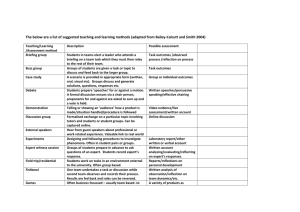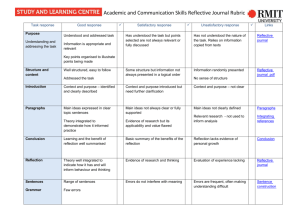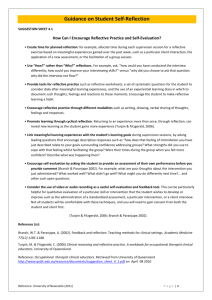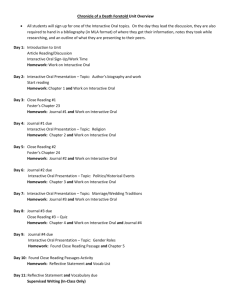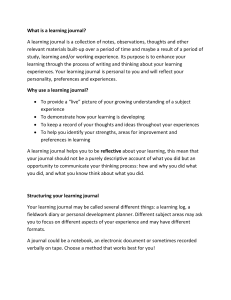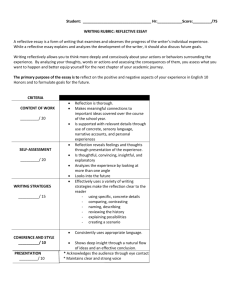New Teacher Orientation Presentation
advertisement
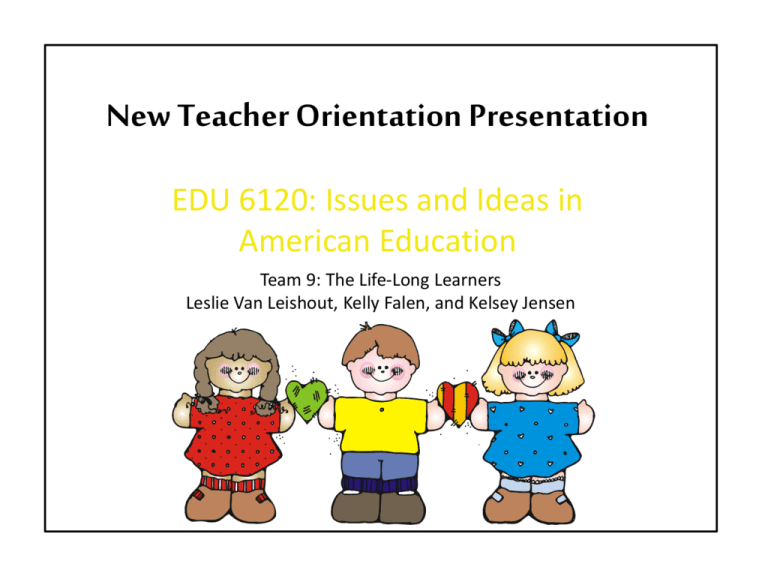
New Teacher Orientation Presentation EDU 6120: Issues and Ideas in American Education Team 9: The Life-Long Learners Leslie Van Leishout, Kelly Falen, and Kelsey Jensen Complete Dedication • Passionate about their work. • Flexible, reflective, caring, and completely dedicated to student learning. • Enthusiastic, knowledgeable and supportive of all students. • Feels unconditional, compassionate love for students. • Ability to multi-task, organize and invent. • Patient, humorous and willing to listen. • “Great teaching... place[s] the learner’s needs and interest first” (Canestrari, 2010, p.113). Why Teach? What are the qualities of a good teacher? High Expectations • Professional, respectful educators empower and motivate students. • Views students' best qualities, assumes positive and optimistic intentions. • Holds high expectations of success for every student. • Understands that mistakes can be turned into constructive learning. • Builds relationships, valuing students as unique, important individuals. • Successful adults are shaped by meaningful educational experiences. Why Teach? What are the qualities of a good teacher? Reflective Thinking • Reflective practices must be employed for good teaching to occur. • “Unless it is accompanied by reflective thinking, little meaningful learning will result” (Ellis, 2001, p.4). • Students benefit from effective modeling of reflective practice. • “There is always room for…and need for improvement” (Ellis, 2001, p.8). • Always something new to learn for both teacher and student. • Teachers are “simultaneously teachers and students” (Canestrari, 2010, p.92). Why Teach? What are the qualities of a good teacher? Student Centered Collaboration • Goals and guidelines are created collaboratively. • A community where ownership and commitment are present. • Students have a voice, their choices drive their learning. • Everyone takes pride in agreed upon classroom responsibilities. • Mutual respect between teacher and students. • Students have significant freedom to choose how/what they learn. • Student-centered environment designed for meaningful learning. • Less “teacher space” and more “student space”. What do students really need? What does a good classroom look and feel like? Engaged Students • • • • • • • • Understands that students have different needs. Discovers and meets those needs for all students to be successful. Engaged, interested students take pride in their learning. “To encourage thinking we must create a joy, an excitement, and a love for learning.” (DiCarlo, 2009, p. 257). Positive, caring learning environment equals high levels of engagement. Through rigor, relevance and relationship, students are truly inspired. All students are treated equally, regardless of ability. Effective classroom management creates successful classrooms. What do students really need? What does a good classroom look and feel like? Safety and Meeting Needs • Maslow’s Hierarchy of Needs are met prior to achievement (Norwood in Huitt, 2001). • When needs are met, students cultivate a longing for knowledge. • A good classroom is safe, bright, and colorful. • Student work is prominently displayed and community is fostered. • Classroom is infused with feelings of confidence, comfort, and trust. • Attitudes of appreciation, tolerance, and understanding are vital. What do students really need? What does a good classroom look and feel like? Student Interest Drives Learning • Student-centered classrooms where everyone feels successful and respected. • Teachers extend the sense of ownership beyond student learning. • "Develop[ing] a participatory environment of decisionmaking" (Ellis, 2001, p. 44) is crucial. • Students have control and are empowered in their learning. • Students feel safe and supported in their learning. • Student interests and experiences guide their education. What is truly meaningful in student learning? How does a classroom become a place of reflective practice? Life Skills • Students are taught to be successful lifelong learners. • Students learn critical thinking and selfreflection. • Students learn skills that foster respect, collaboration and self-awareness. • Learning itself is not limited to academic content. • Personal growth, critical thinking, self assessment. What is truly meaningful in student learning? How does a classroom become a place of reflective practice? Achieving Goals through Reflection • Through reflection, students set and achieve goals. • Goals empower the students and develop selfefficacy. • Reflection offers an inside look at student learning. • Reflection provides opportunities to differentiate instruction effectively. • Students are engaged, encouraged and experience success through achievement. • Through reflection students cultivate self respect. What is truly meaningful in student learning? How does a classroom become a place of reflective practice? References • Canestrari, A. S. (2010). Educational foundations: An anthology of critical readings. Thousand Oaks, CA: SAGE Publishing, Inc. • DiCarlo, S. E. (2009). Too much content, not enough thinking, and too little fun! Advances in Physiology Education, p. 257-264. • Ellis, A. K. (2001). Teaching, learning, & assessment together: The reflective classroom. Larchmont, NY: Eye On Education. • Ellis, A.K. (2001) The emergence of western educational thought, Audio podcast, retrieved June 6, 2010. • Gallwey, T. W. (1974). The inner game of tennis. New York: Bantom Books. • Giovanni, N. (2009). Famous quotes. Retrieved April 25, 2010, from http://famousquotes.psyphil.com/ • Huitt, W. (2001). Motivation to learn: An overview. Educational Psychology Interactive. Valdosta, GA: Valdosta State University. Retrieved April 29, 2010, from http://www.edpsycinteractive.org/col/motivation/motivate.html
